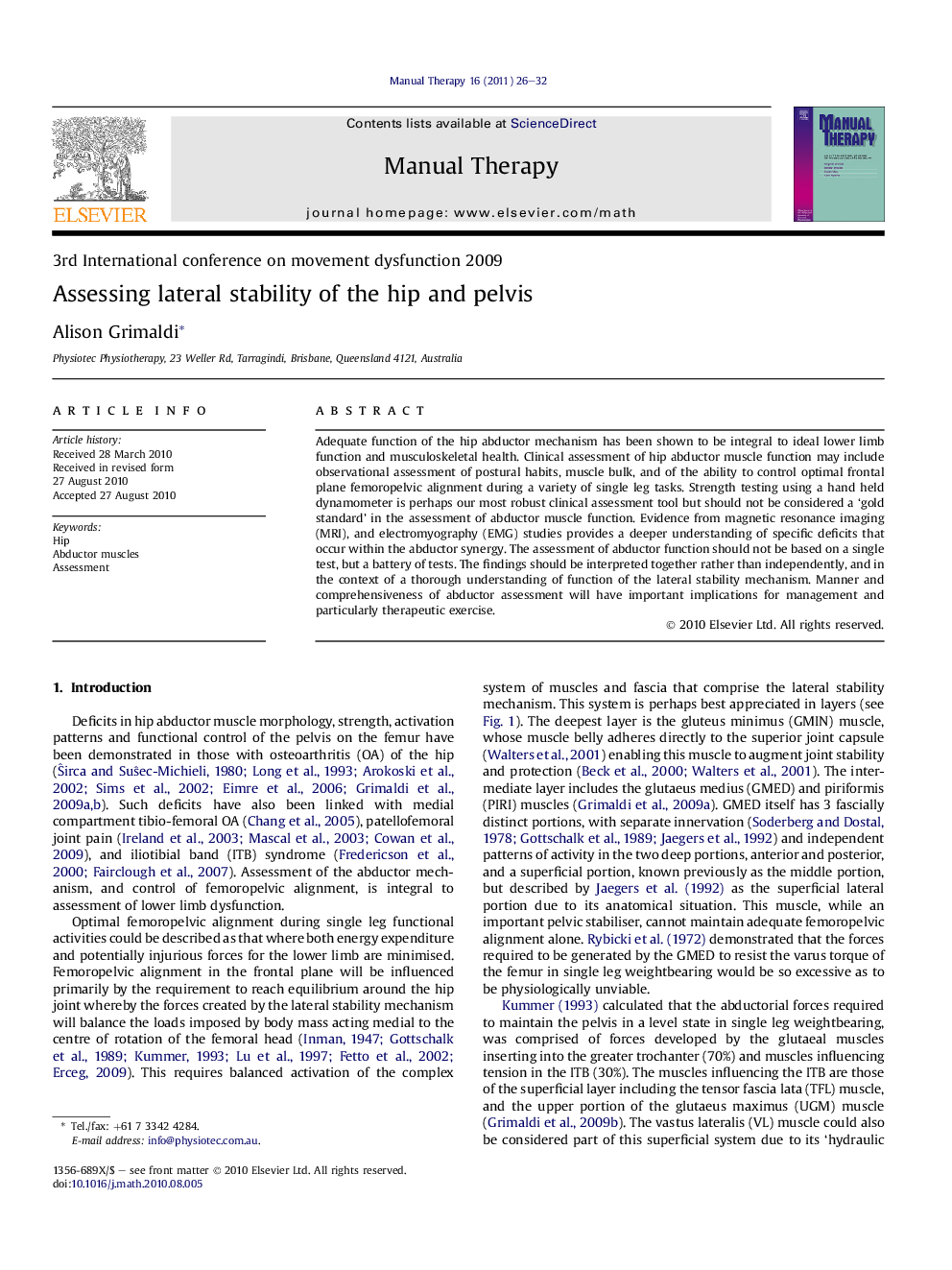| Article ID | Journal | Published Year | Pages | File Type |
|---|---|---|---|---|
| 2625483 | Manual Therapy | 2011 | 7 Pages |
Adequate function of the hip abductor mechanism has been shown to be integral to ideal lower limb function and musculoskeletal health. Clinical assessment of hip abductor muscle function may include observational assessment of postural habits, muscle bulk, and of the ability to control optimal frontal plane femoropelvic alignment during a variety of single leg tasks. Strength testing using a hand held dynamometer is perhaps our most robust clinical assessment tool but should not be considered a ‘gold standard’ in the assessment of abductor muscle function. Evidence from magnetic resonance imaging (MRI), and electromyography (EMG) studies provides a deeper understanding of specific deficits that occur within the abductor synergy. The assessment of abductor function should not be based on a single test, but a battery of tests. The findings should be interpreted together rather than independently, and in the context of a thorough understanding of function of the lateral stability mechanism. Manner and comprehensiveness of abductor assessment will have important implications for management and particularly therapeutic exercise.
